⫸ Introduction to Fossils
Have you ever encountered a strangely shaped rock that looked too perfect to be natural? Chances are, you might have discovered a fossil! These are more than just relics of the past – they’re windows into worlds long lost, bursting with creatures and plants unlike anything alive today.
So, what is a fossil? It’s not just a rock, but a record. It’s the preserved remains or traces of plants, animals, and other organisms from a distant past. But how does a living creature turn to stone? Fossilization is a fascinating dance between time, biology, and geology. Not everything that dies leaves a fossil; the conditions must be just right.
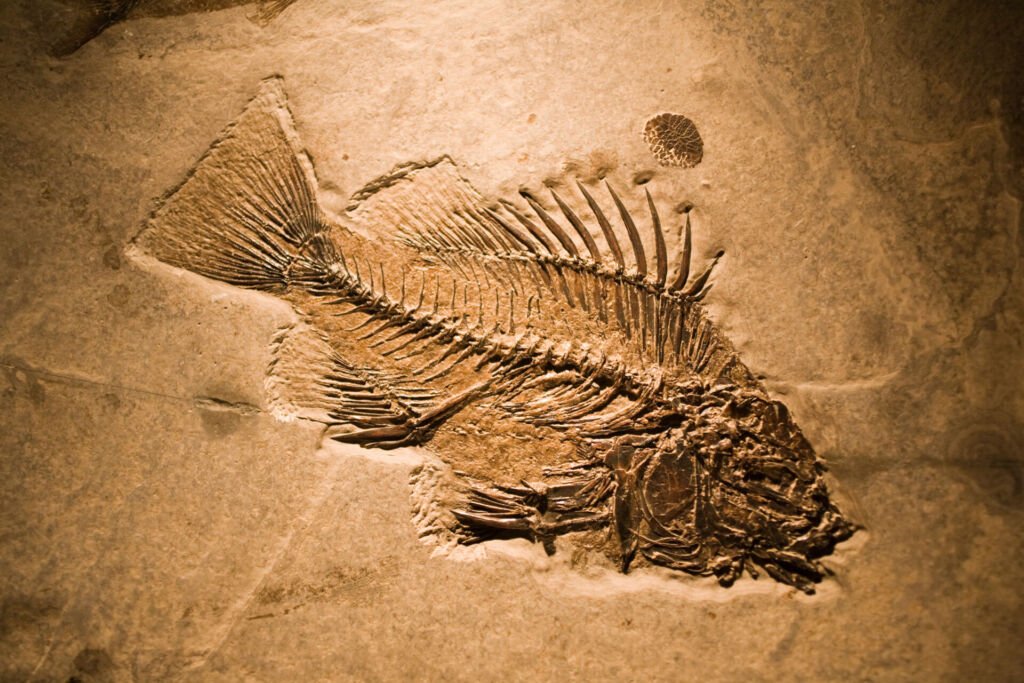
Imagine holding a piece of the prehistoric past in your hands! By studying fossils, we can piece together how dinosaurs lived and hunted, discover bizarre sea creatures, and witness the rise and fall of extraordinary species. So what is it? It’s a time capsule, a message from a world vastly different.
Fossils aren’t just for scientists – anyone with a sense of wonder and a thirst for discovery. Whether you’re fascinated by dinosaurs, curious about ancient ecosystems, or love a good mystery, the world of fossils opens up endless possibilities. It’s an invitation to adventure, a journey back through time to explore the astonishing story of life on Earth.
⫸ What is a Fossil?
Have you ever wondered about those strange, stony shapes you might find in rocks? Those are fossils, and they’re WAY more than just old bones! These incredible time capsules preserve the remains and traces of life from millions of years ago. So, let’s unlock their secrets!
- These are the preserved remains or evidence of ancient plants, animals, and other organisms.
- They’re not actual living things but remain transformed into rock over time.
- These can be anything from massive dinosaur skeletons to tiny insect wings!
Why Are Fossils So Cool?
- Windows into the Past: They are like peeking into long-lost worlds, revealing creatures and ecosystems we’d never otherwise know about.
- Clues to Evolution: They show how life on Earth has changed and adapted over incredible timescales.
- Tangible History: They let us hold a piece of prehistory, connecting us to our planet’s immense timeline.
Types of Fossils
The term fossil encompasses a much wider variety of preserved life forms –
- Body Fossils: These are the direct remains of organisms, such as bones, shells, teeth, or even petrified wood.
- Trace Fossils: These are records of an organism’s activity, including footprints, burrows, nests, or even fossilized droppings (known as coprolites).
So, whether you’re a dino-lover, a nature enthusiast, or simply curious about the world, fossils hold a unique fascination. They spark our imagination and remind us of the incredible story of life on Earth – a story that we’re still uncovering!
You don’t need to be a paleontologist to appreciate fossils. Whether you dream of unearthing a dinosaur skeleton or find wonder in the delicate imprint of a prehistoric leaf, these ignite our imagination. It’s a tangible connection to the past, a piece of an ancient world waiting to be explored. So next time you’re out exploring, keep your eyes peeled – you never know what incredible time capsule from the past might be waiting to be discovered!
⫸ How Do Fossils Form?
The fossilization process is a rare and extraordinary event. Usually, when an organism dies, it decomposes quickly or is consumed by scavengers. For fossilization to occur, special conditions are required:
- Rapid Burial: Dead organisms must be buried quickly in sediments like sand, mud, or volcanic ash, which protects them from the elements and scavengers.
- Mineralization: Over time, groundwater seeps through the sediments, dissolving minerals. These minerals gradually replace the organic material within bones or other hard tissues, turning them into stone.
- Minimal Disturbance: The fossilized remains must lie undisturbed for millions of years to avoid destruction or erosion.
- Molds and Casts: Organisms decay, leaving a hollow imprint (mold), which hardening minerals may fill to form a cast.
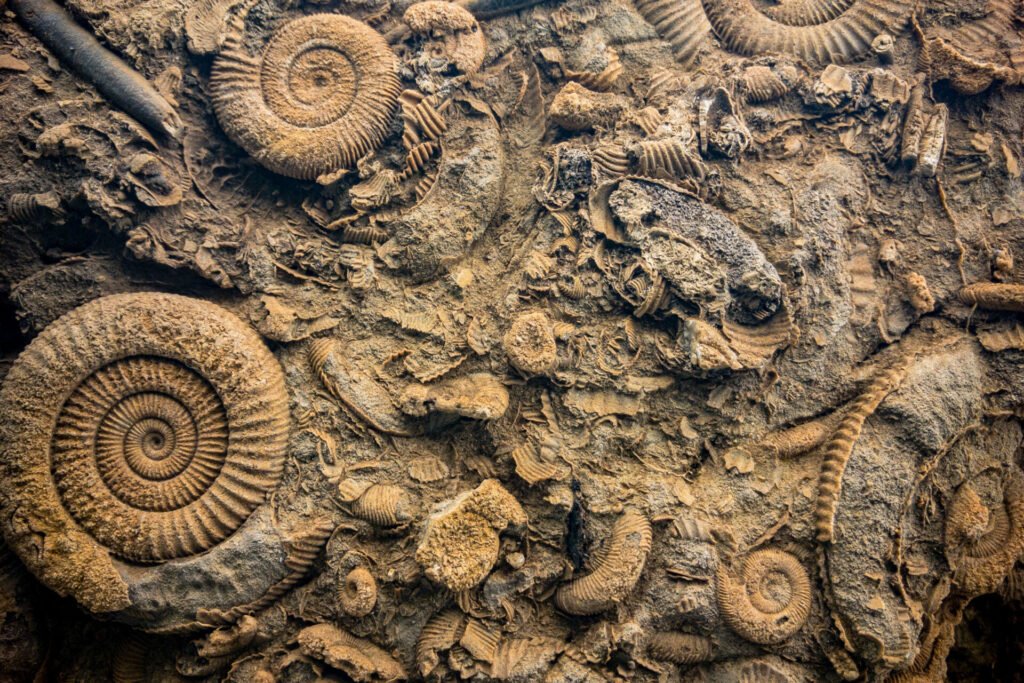
Preserved Remains: In rare conditions, soft tissues like insects in amber or frozen mammoths may be preserved for long periods.
⫸ Features of Fossils
- Fossils are typically found in sedimentary rocks.
- To be considered a fossil, remains are usually over 10,000 years old.
- Fossils include a vast array of life forms – plants (leaves, petrified wood), invertebrates (shells, corals), microscopic organisms (foraminifera, pollen), trace fossils (footprints, burrows, nests), etc.
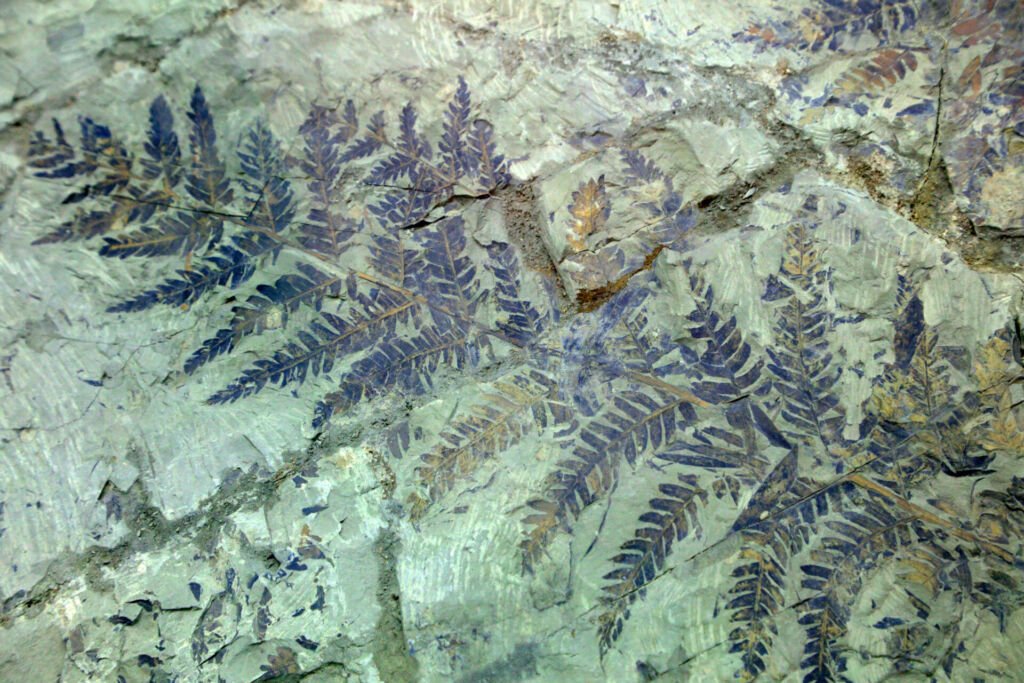
⫸ Importance of Fossils
- Windows Into the Past: Fossils offer direct links to prehistoric life, providing physical evidence of species and environments that existed millions of years ago. They allow us to glimpse worlds that would otherwise be lost to time.
- Records of Evolution: By comparing fossils from different time periods, scientists can piece together the evolutionary relationships between species. Fossils can reveal how organisms adapted, changed, diversified, or went extinct over time.
- Clues about Paleoenvironments: Fossils help paleontologists reconstruct past ecosystems and climates. For example, fossils of marine creatures in a desert indicate that the region was once underwater.
- Natural Time Capsules: Fossils capture a moment in time, whether it’s a creature’s last footprint or a perfectly preserved insect in amber. This preservation offers physical detail that historical descriptions can’t match.
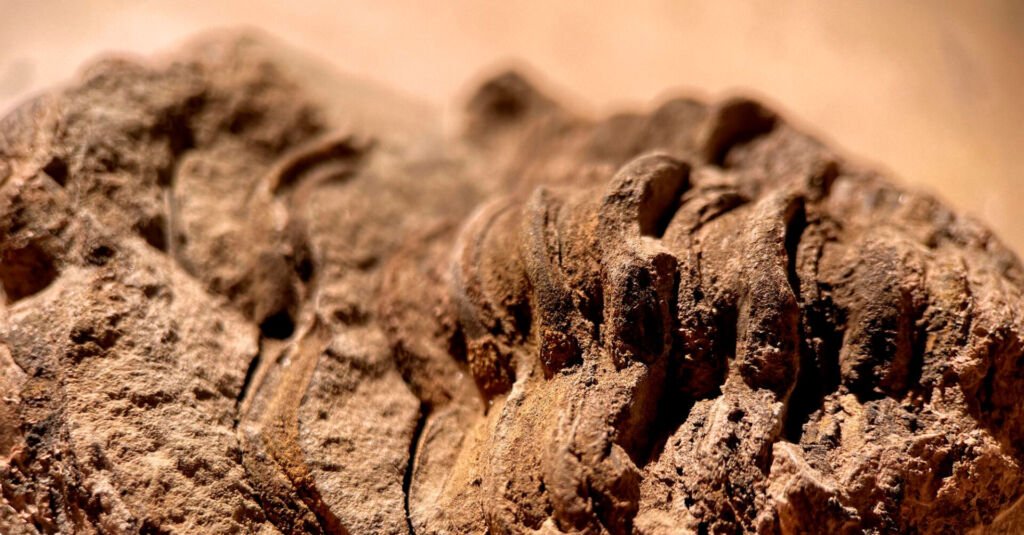
- Rarity: The process of fossilization is sporadic. Most organisms decompose entirely after death. Each fossil represents a remarkable event, a tiny victory over the forces of time and decay.
- Evolutionary Insights: Fossils help construct the “family tree” of life, showing relationships between extinct and modern species.
- Geological Dating: Index fossils (species that lived in a short, known time period) help determine the relative age of rock layers.
⫸ Where can Fossils be Found?
Fossils are most commonly found in the following places:
- Sedimentary Rocks: Rocks like sandstone, limestone, and shale are formed from layers of deposited sediments that can bury and preserve organisms.
- Riverbeds and Cliffs: Water erosion can expose sedimentary rock layers along riverbeds and cliffsides, revealing fossils within.
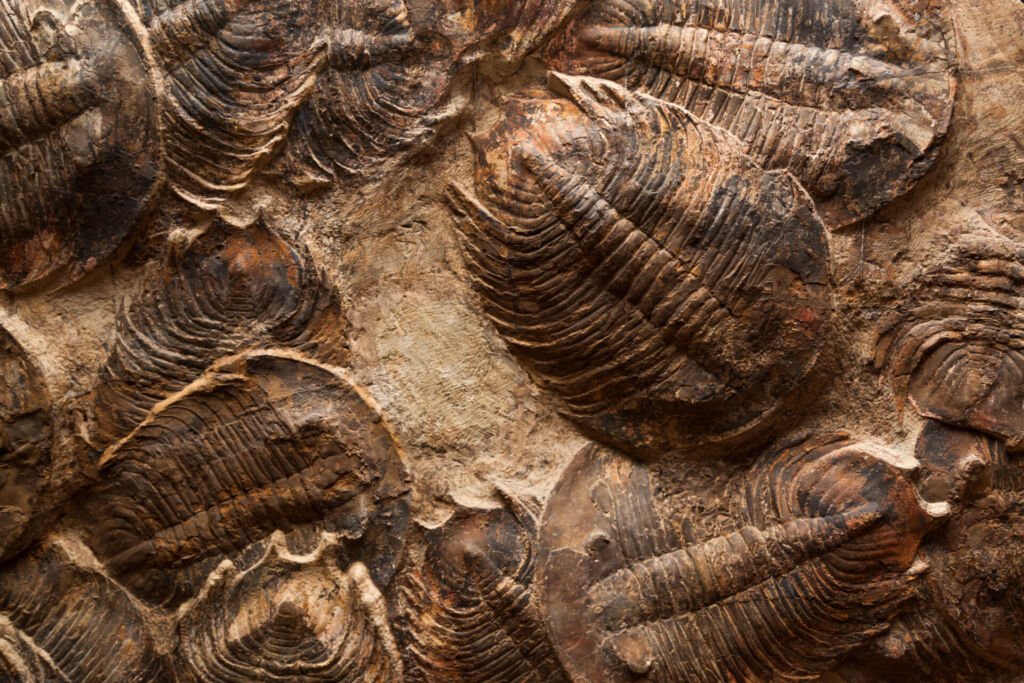
- Deserts: The dry, arid environments in deserts help preserve fossils and protect them from being covered in vegetation.
- Road Cuts and Quarries: Human activities like road construction and quarrying can unearth fossils that may have been hidden for millions of years.
- Caves: Caves can act as natural shelters, preserving fossils of animals that inhabited or sought refuge in them.
- Amber: This fossilized tree resin can sometimes trap small insects and other creatures, preserving them in fantastic detail.
- Frozen Environments: In rare cases, animals can be frozen in glaciers or permafrost, preserving their tissues for thousands of years.
⫸ Famous Fossils Discovered Globally
Here’s a list of some iconic fossils discovered across the globe:
Lucy (Australopithecus afarensis): Discovered in Ethiopia in 1974, Lucy is one of the most complete early hominid skeletons ever found. She lived approximately 3.2 million years ago and provided incredible insight into human evolution.
Archaeopteryx: Often considered the “missing link” between dinosaurs and birds, Archaeopteryx was discovered in Germany in 1861. Its mix of reptilian and bird-like features offers strong evidence for the evolutionary connection between the two.

Triceratops: This three-horned dinosaur is a classic symbol of the late Cretaceous period. Numerous Triceratops fossils have been unearthed in North America, providing information on their anatomy and behavior.
The Burgess Shale Fossils: Discovered in the Canadian Rockies, the Burgess Shale contains an astonishing array of exceptionally preserved fossils from the Cambrian period (about 508 million years ago). These fossils offer a glimpse into the remarkable diversity of life during evolutionary experimentation.
La Brea Tar Pits Fossils: Located in Los Angeles, the La Brea Tar Pits are natural asphalt deposits that have trapped and preserved countless animals from the Ice Age. Fossils from saber-toothed cats, dire wolves, and mammoths offer a unique look into a vanished ecosystem.
Tiktaalik: Discovered in the Canadian Arctic, Tiktaalik represents a crucial transitional form in the evolution of fish to land-dwelling animals. It lived in the late Devonian period, about 375 million years ago, and had features of fish and early tetrapods (four-limbed animals).
Tyrannosaurus Rex (Sue): One of the most complete and enormous T-Rex skeletons ever found, Sue was discovered in South Dakota in 1990. This iconic specimen continues to shape our understanding of this apex predator.
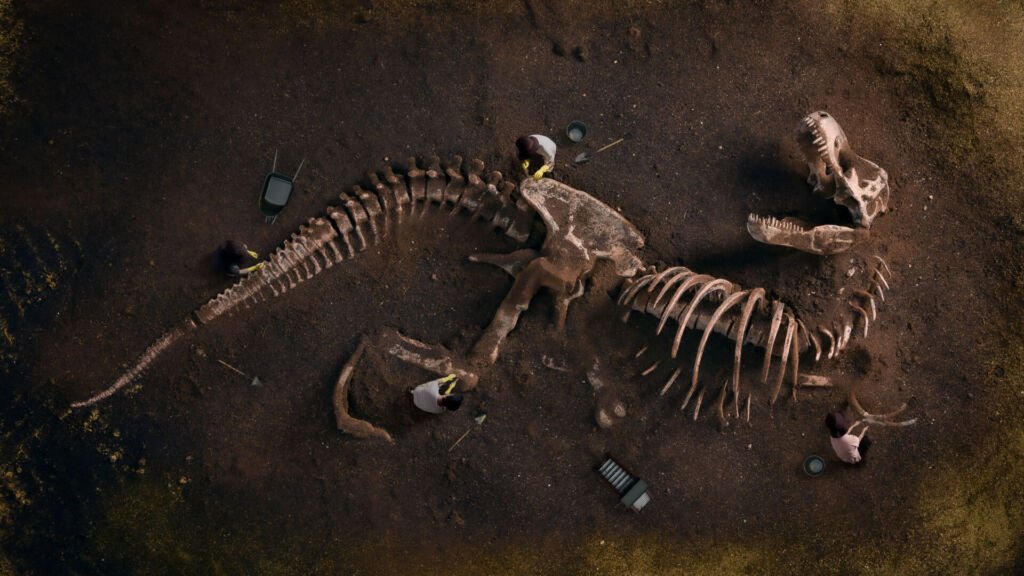
Ichthyosaur with Embryo: Several fossilized ichthyosaurs, extinct marine reptiles, have been remarkably preserved with embryos still inside. These specimens offer unique insights into their reproductive biology and potential for live birth.
Dinosaur Eggs and Nests: Fossilized dinosaur eggs and nesting sites worldwide reveal fascinating information about dinosaur reproduction and parenting behaviors.
Spinosaurus: This massive, semi-aquatic predator lived in North Africa during the Cretaceous period. Recent discoveries have reshaped our understanding of Spinosaurus as a potentially aquatic dinosaur with a sizeable sail-like structure on its back.
⫸ What is Taphonomy?
Taphonomy is the study of the processes that affect an organism’s remains after death, leading to their fossilization.
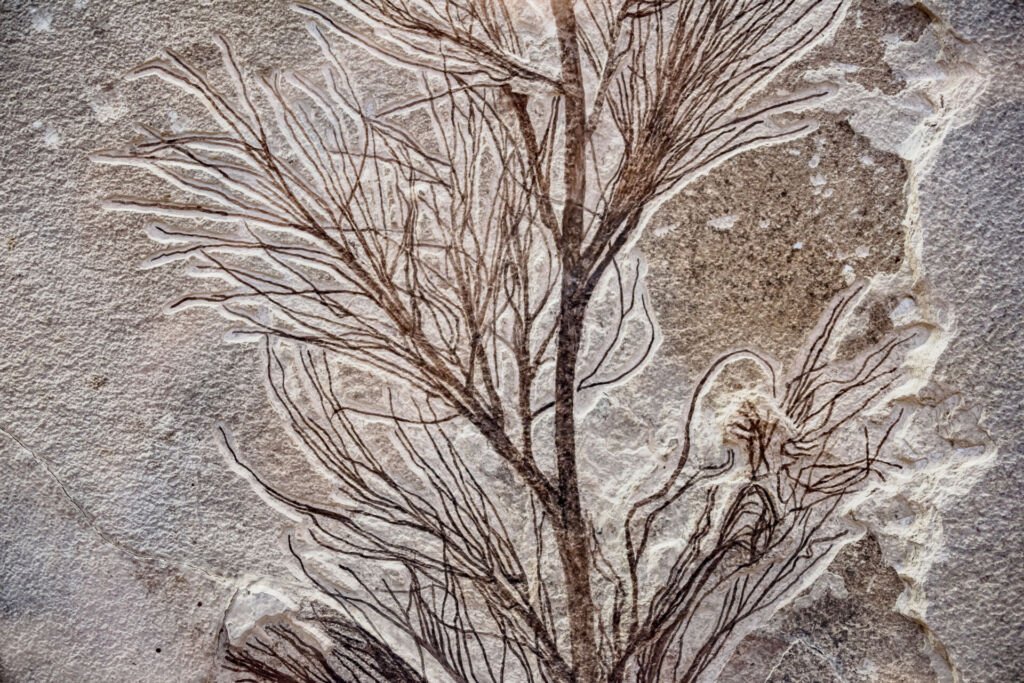
This includes-
- Biostratinomy: The processes that occur immediately after death and until burial.
- Diagenesis: The changes that happen after burial in the sediment.
Taphonomy also considers the events after a fossil is exposed, such as weathering, erosion, collection, preparation, and storage processes, which can further alter the specimen.
⫸ Conclusion
Fossils offer a thrilling glimpse into the extraordinary history of our planet. They whisper tales of vanished giants, ancient forests, and creatures stranger than fiction. Whether uncovering them yourself or marveling at them in a museum, fossils ignite a sense of awe and wonder.
So, what is a fossil? It’s more than a rock. It’s a key that unlocks the secrets of vanished worlds, a piece of the breathtaking timeline of life on Earth. Next time you stumble across a curious-looking stone, remember – it might hold echoes of a world millions of years ago.
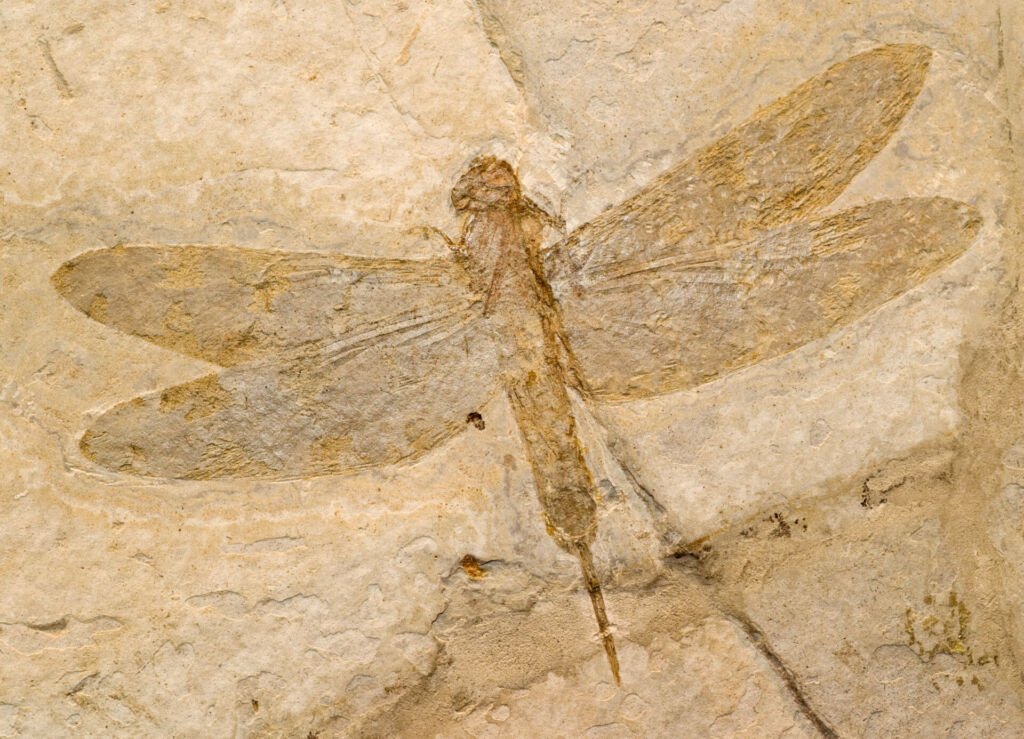
The fossil story is far from finished. Discoveries are being made every day, reshaping our understanding of the past and revealing the incredible diversity on our planet. Whether you’re an armchair paleontologist or an avid explorer, the world of fossils is an invitation to an adventure through time.
What is a fossil? It’s a reminder that the world beneath our feet was once a wildly different place, and the fantastic journey of life continues to unfold.

